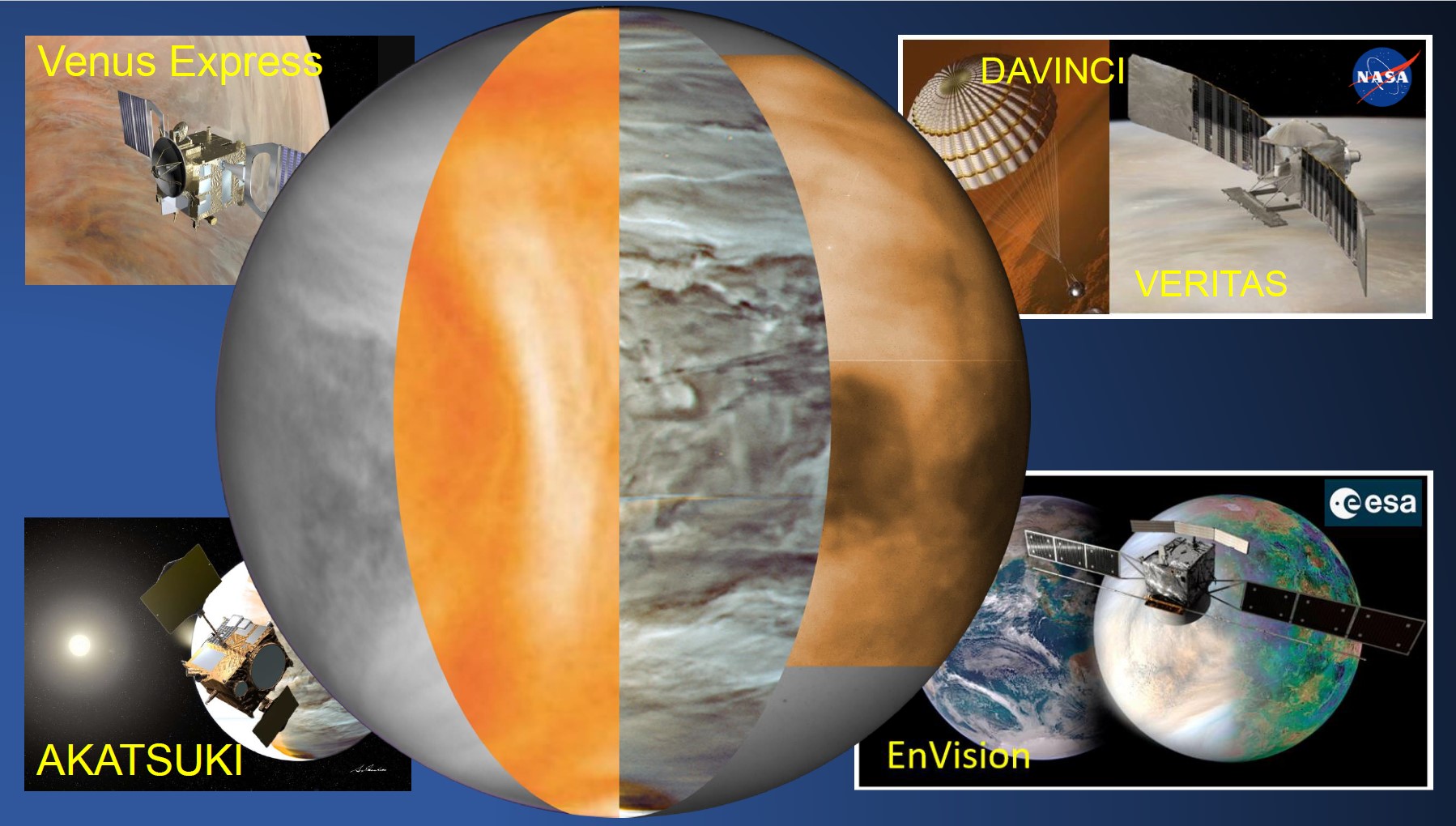Variability and Stability of the Venus' Atmosphere in Various Spatiotemporal Scales Inferred from Space Missions and Numerical Simulations

(Credits: ISAS/JAXA, NASA, ESA)
Context:
Objectives:
The aim of the Workshop is to intensively discuss the variability and stability of the Venus’ atmosphere based on the analysis of data from space missions, as well as the numerical simulations. Since the duration of Akatsuki after the orbit insertion is becoming comparable to the one of the Venus Express', the data from both missions can be analyzed individually or by combination. During the Workshop, participants will identify points in common and differences in these two missions and interpret them in terms of mechanisms. Specific interests include the followings:
(a) Stability and variability of the zonal wind (super rotation) speed,
(b) Albedo (in ultraviolet) changes and the energy budget,
(c) Changes in SO2 abundance at the cloud-top level with related chemistry
(d) Changes in atmospheric vertical structure (inferred from radio occultation).
As there are going to be more Venus missions (two from NASA, one from ESA, and from India, China, and Russia) in near future, summarizing our current knowledge about these should become an essential clue for the successors.
Product:
The book from this workshop will include at least 7 chapters: one overview of recent Venus missions, four for the above (a) – (d), one for numerical simulations, and one for provisions to future missions/studies. The target readers would range from undergraduates to early-career researchers who will actively work with today's data and sophisticated numerical models. The book is going to be the best summary of long-term data set (Venus Express and Akatsuki), the most comprehensive review of recent findings (both in the data analysis and the numerical simulations), and the convenient reference to plan for future missions (with support from the ground). Since Venus (a slow rotator) is considered as an analog for exoplanets (many of them are tidally-locked to the main star), this book will also be of great interests for the researchers of exoplanets.
Date: 02-06 June 2025
|
Takehiko Satoh |
Institute of Space and Astronautical Science/Japan Aerospace Exploration Agency, Japan |
| Hiroki Ando | Kyoto Sangyo University, Japan |
| Takeshi Imamura | The University of Tokyo, Japan |
| Jun Yang | Peking University, China |
| Yeon Joo Lee | Institute for Basic Science, Republic of Korea |
| Silvia Tellmann | University of Cologne, Germany |
| Itziar Garate Lopez | University of the Basque Country, Spain |
| Kevin McGouldrick | University of Colorado Boulder, USA |